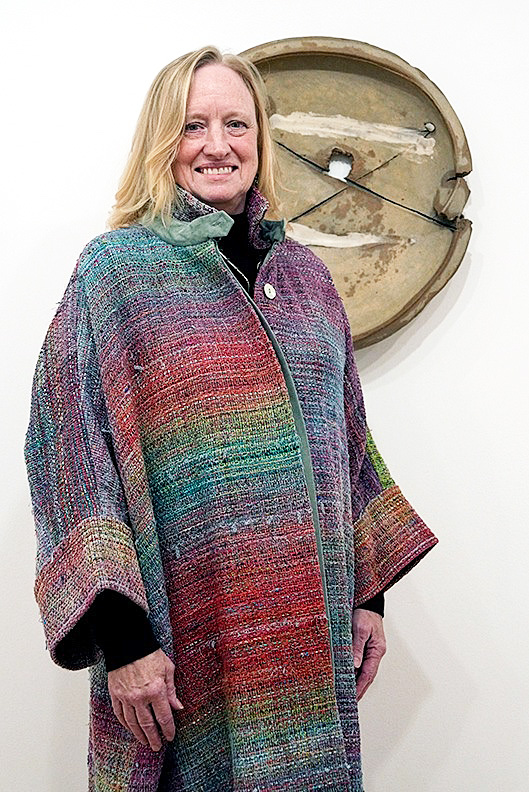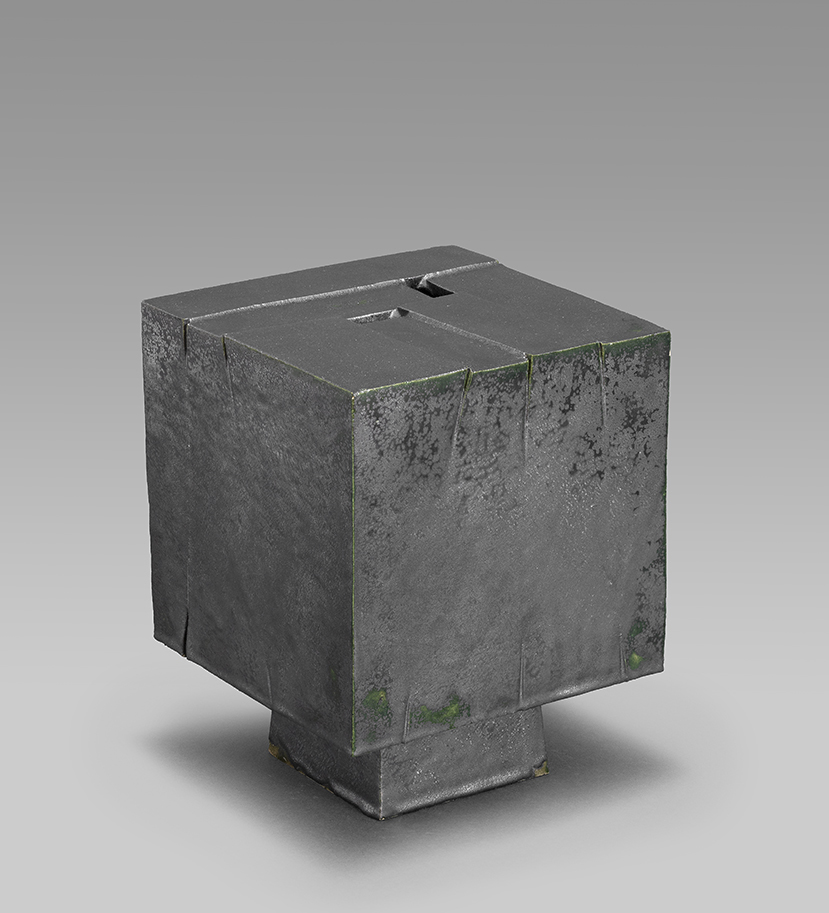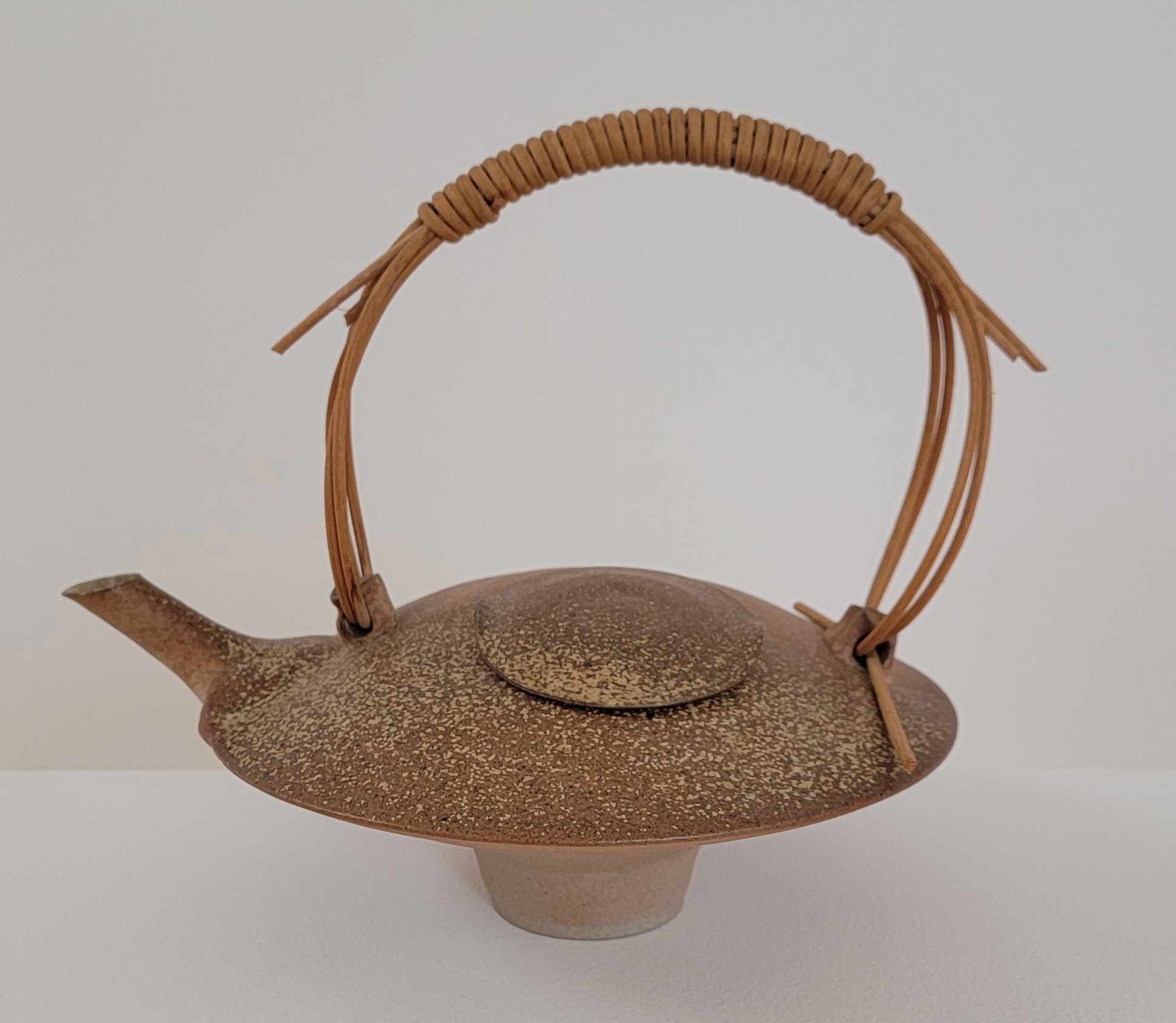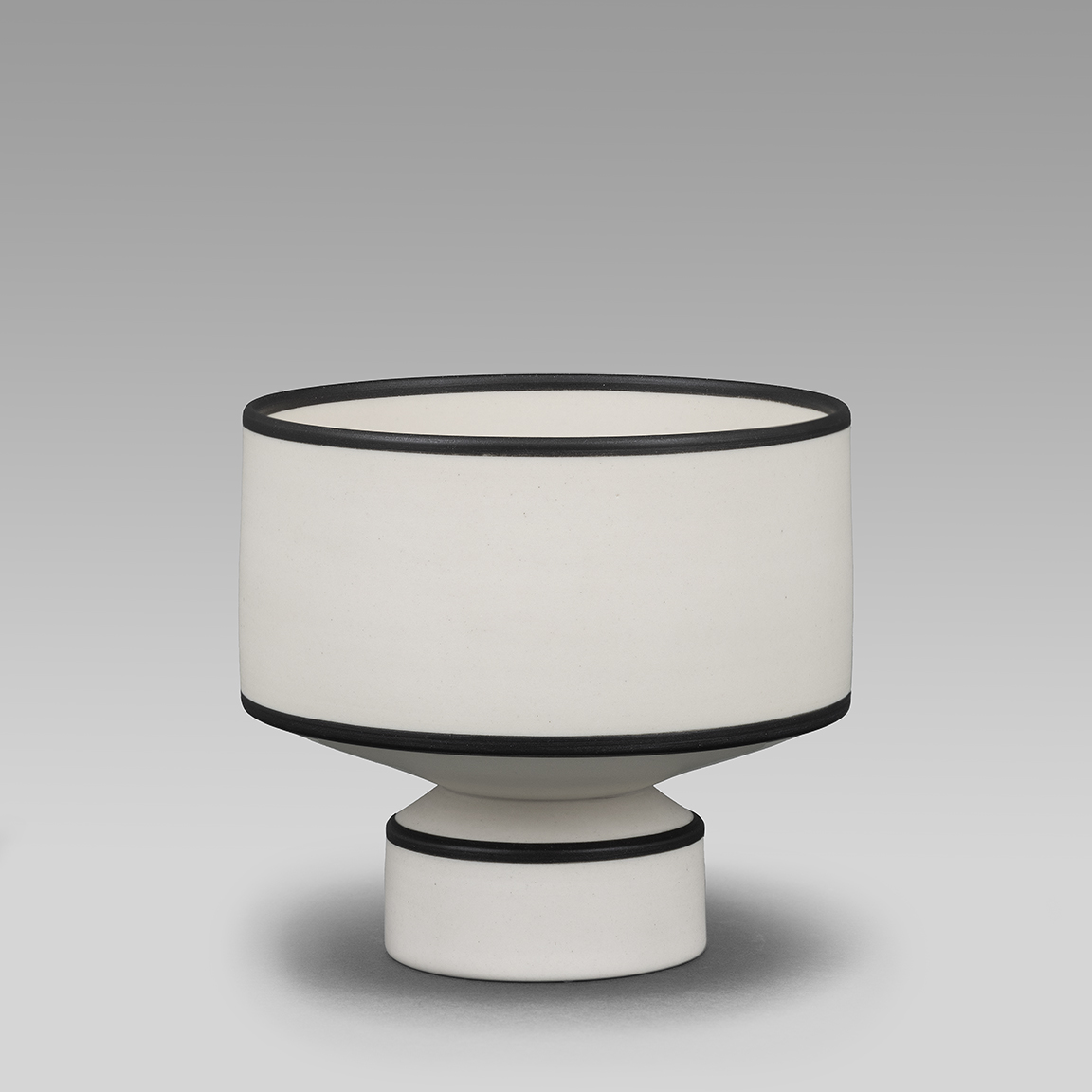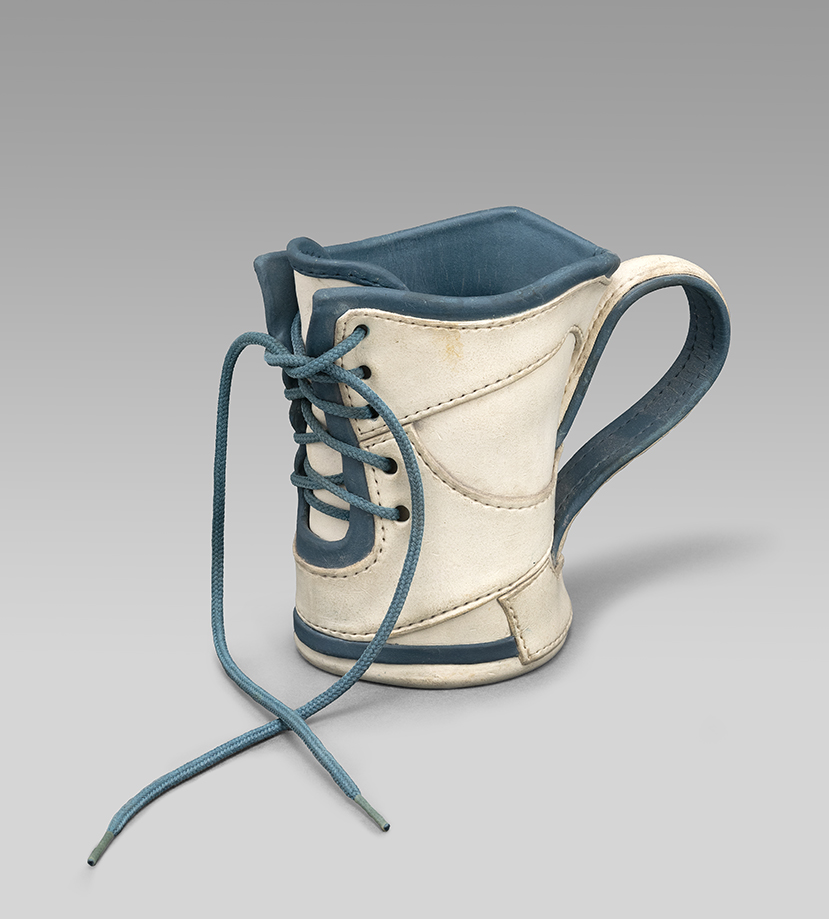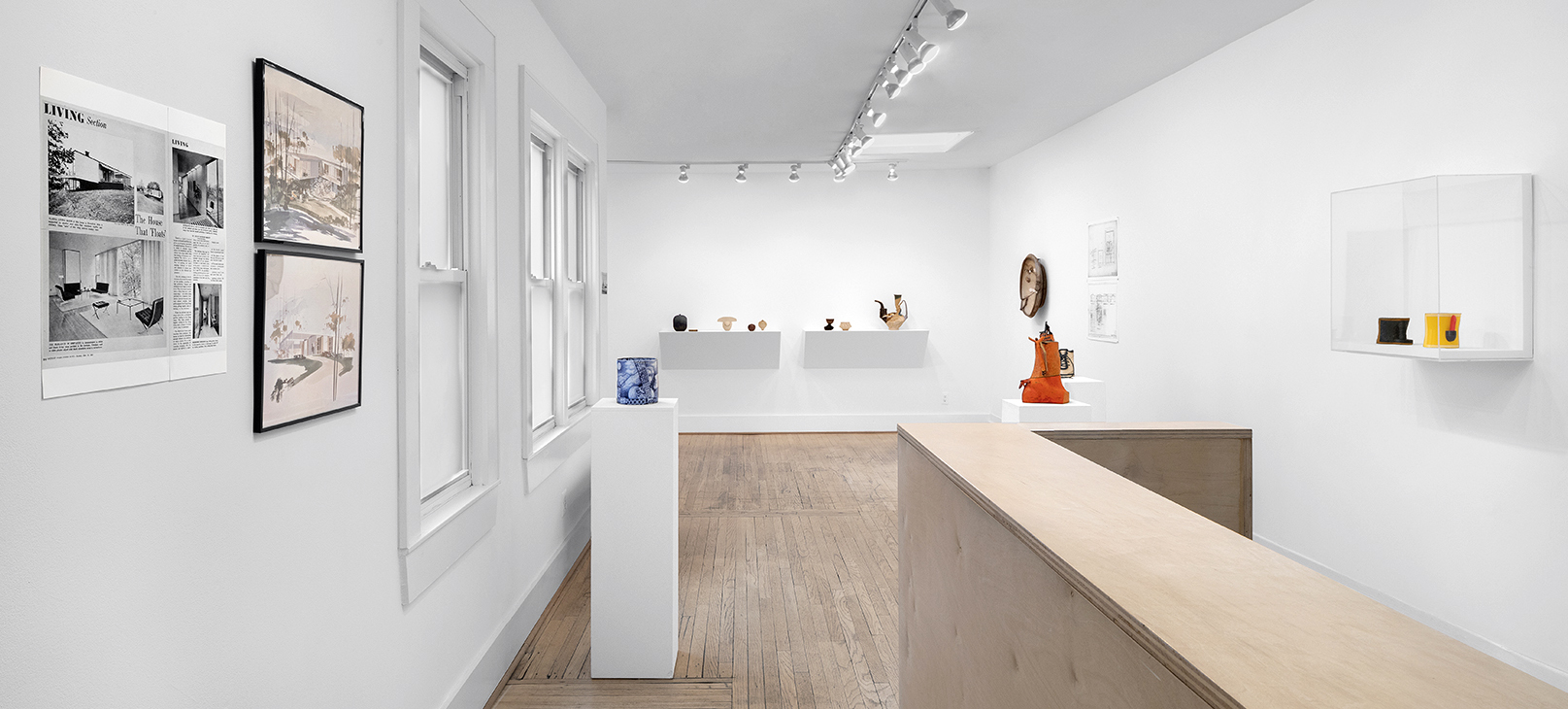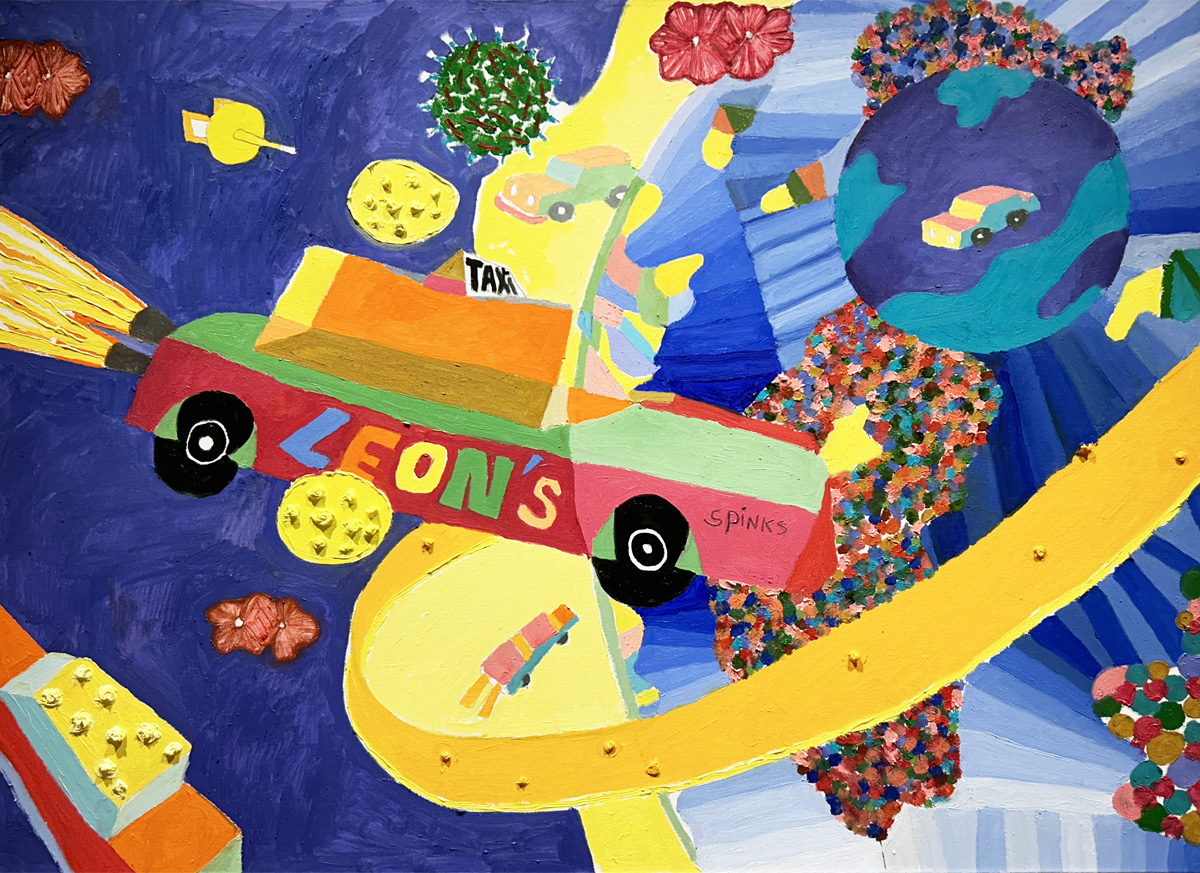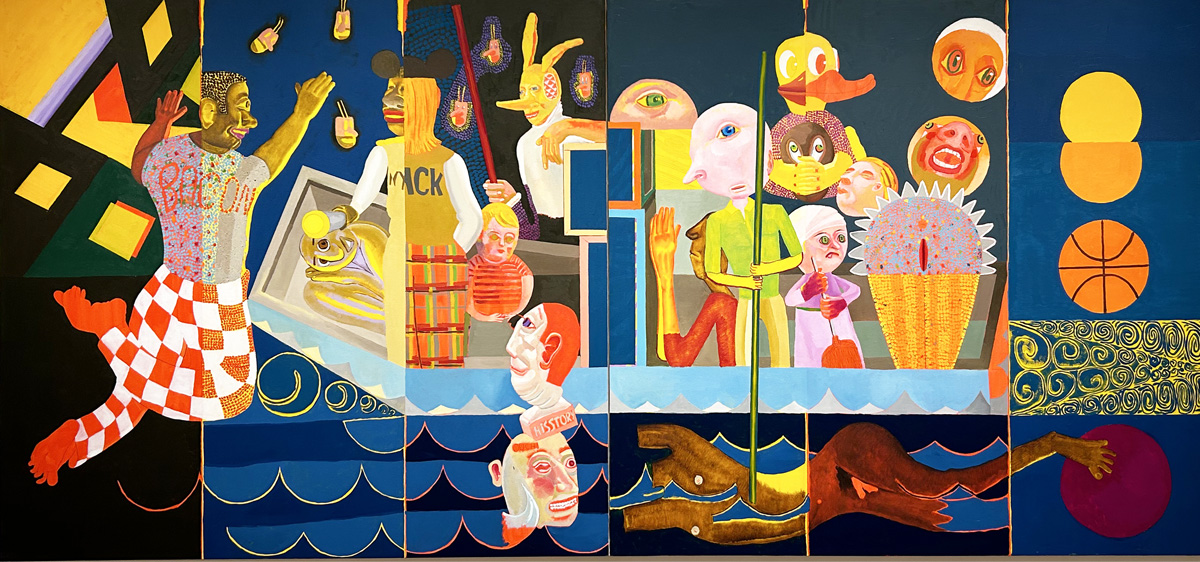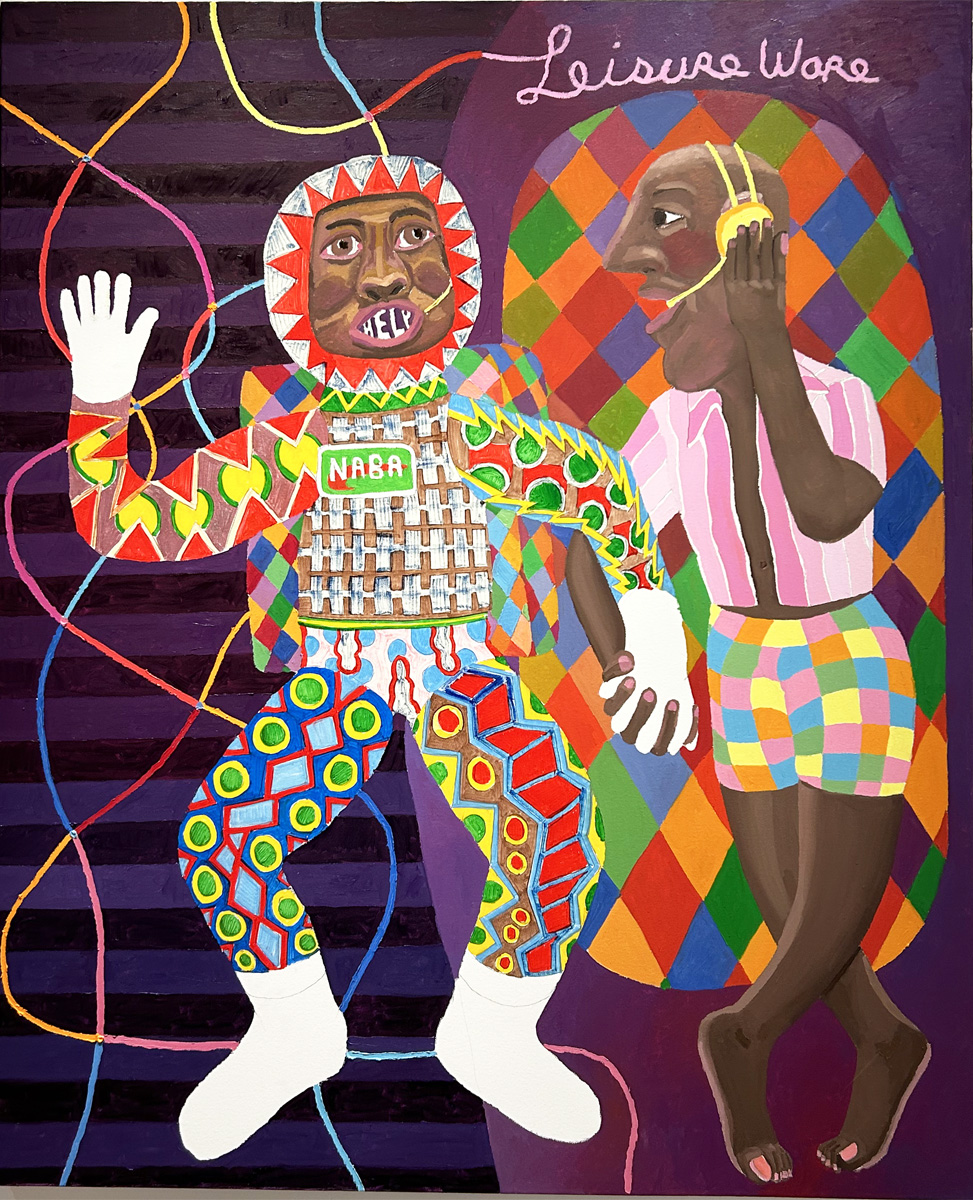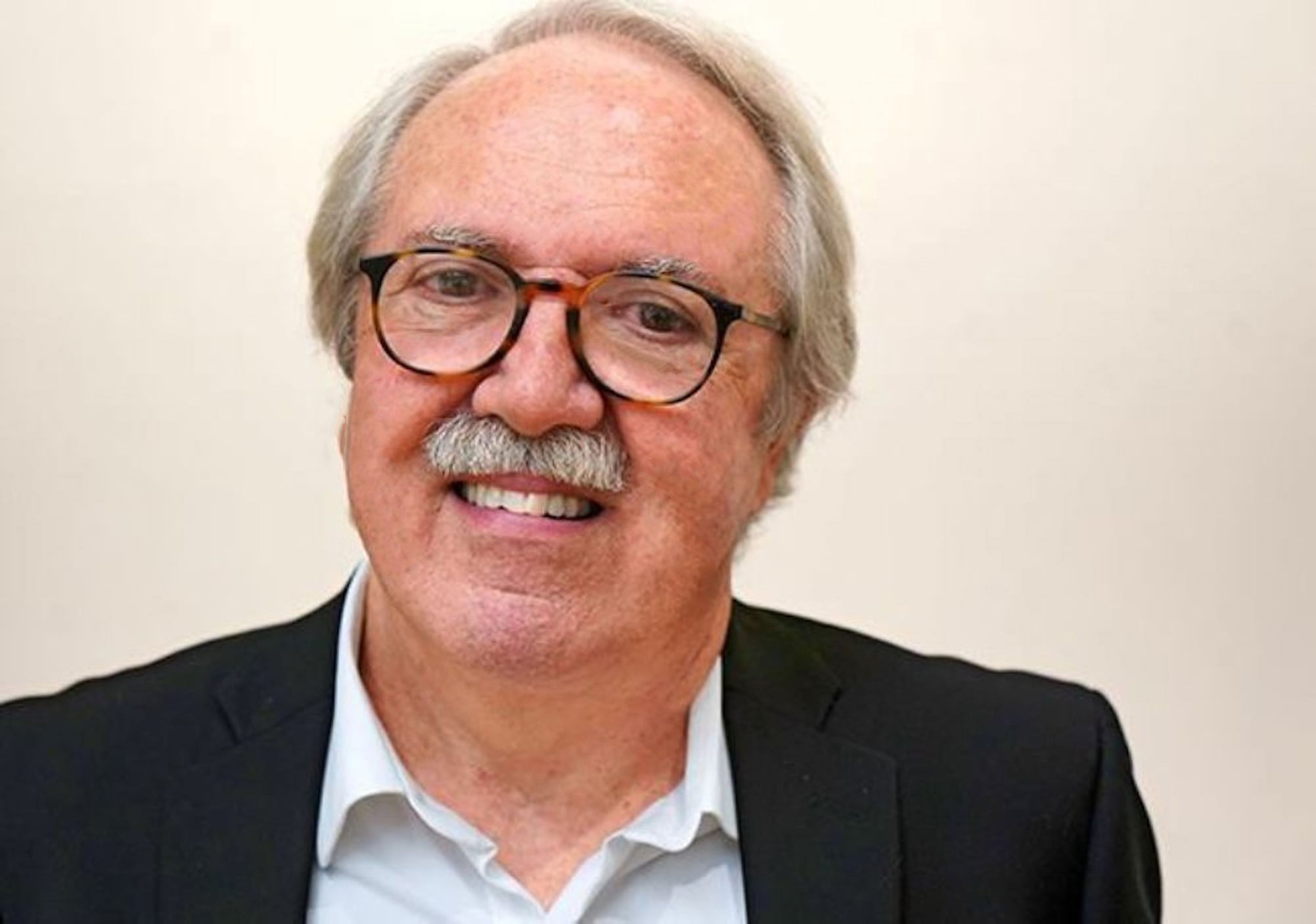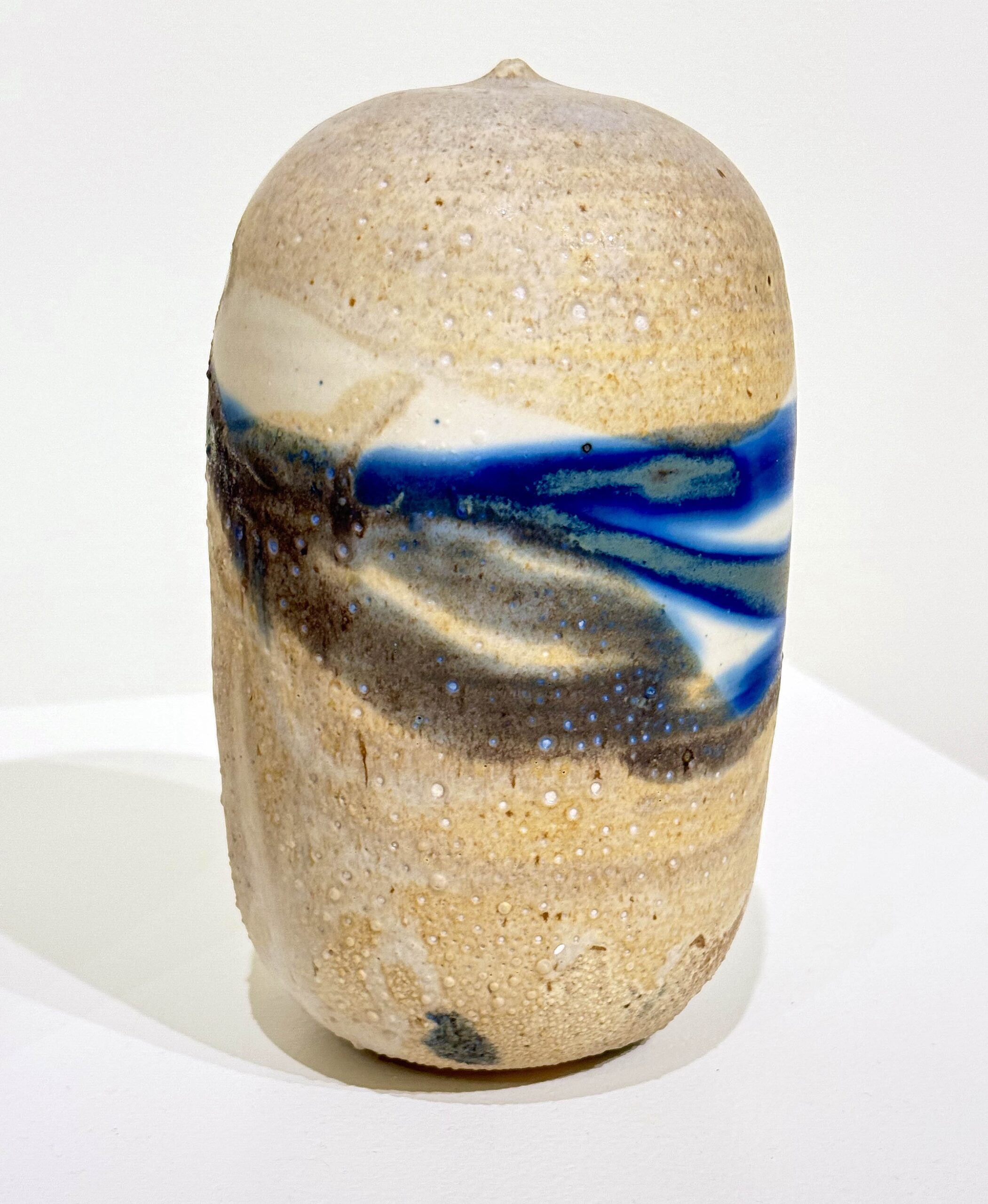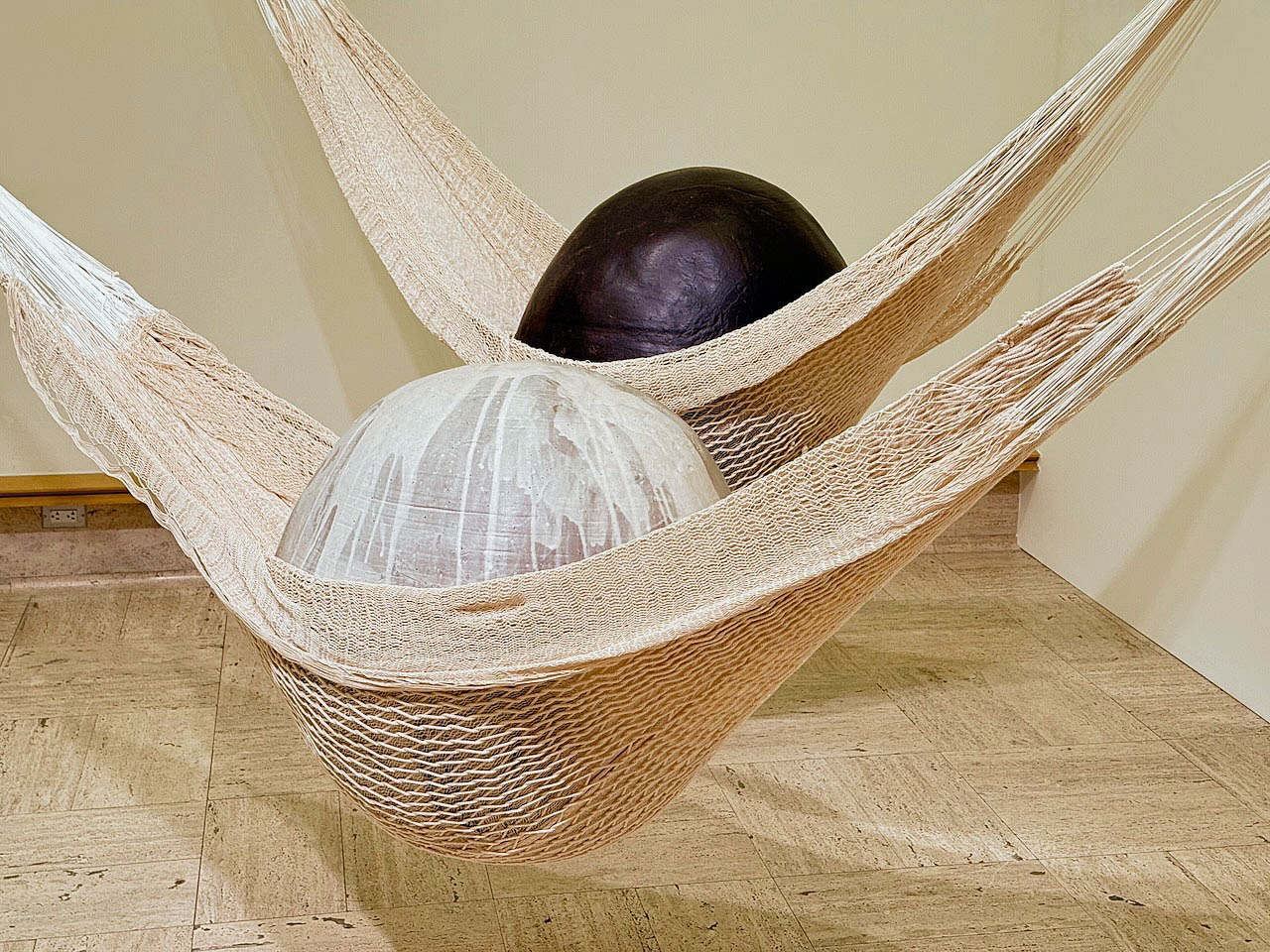Clay, of course, has been a fundamental material for both artistic and utilitarian objects for millennia. In Europe, ceramics had long been a masculine pursuit, maybe because digging up clay, feeding fiery kilns, and other physical aspects of the process were deemed too strenuous (or unseemly) for women. After the Industrial Revolution mechanized the manufacture of ceramics, women were employed as “china painters,” adding decorations to factory-made pottery, but weren’t involved in the actual creation of the objects. Once the ideals of the British Arts & Crafts movement — its revolt against industrialization and its emphasis on human-made objects — found their way to the U.S., studios began making ceramics featuring distinctively American designs. Some of these potteries were run by women, and some tutored and encouraged girls to take up ceramics as a vocation. After World War II, women artists emerged as important members of the Studio Ceramics movement, helping their male counterparts to bring the medium fully into the realm of fine art. Now, the Flint Institute of Arts, which boasts an impressive array of ceramics in its permanent collection, presents “Making Her Mark” (through September 28), a smallish but eclectic exhibition of ceramic artworks by women that proves that, released from any obligation to practicality, clay can be an almost endlessly versatile medium for expression.

Evelyn Cheromiah, Olla, Stoneware
Many of the objects in the show do at least nod toward the utilitarian vessels usually associated with ceramics. Evelyn Cheromiah’s Olla, a stoneware pot decorated with geometric earth tone patterns, is perhaps the most faithful piece here, sourced, fired, and painted according to the traditions of the artist’s Laguna Pueblo heritage. English innovator Clarice Cliff’s hand-painted Art Deco “Bizarre” ware is represented by two perfectly functional Fantasque Pitchers, adorned with colorful fruits and a country cottage. Sara Paloma’s jet-black Bottles, with their pencil-thin necks, and Eva Hild’s untitled white porcelain bowl (studded with nails) are at least nominally practical.
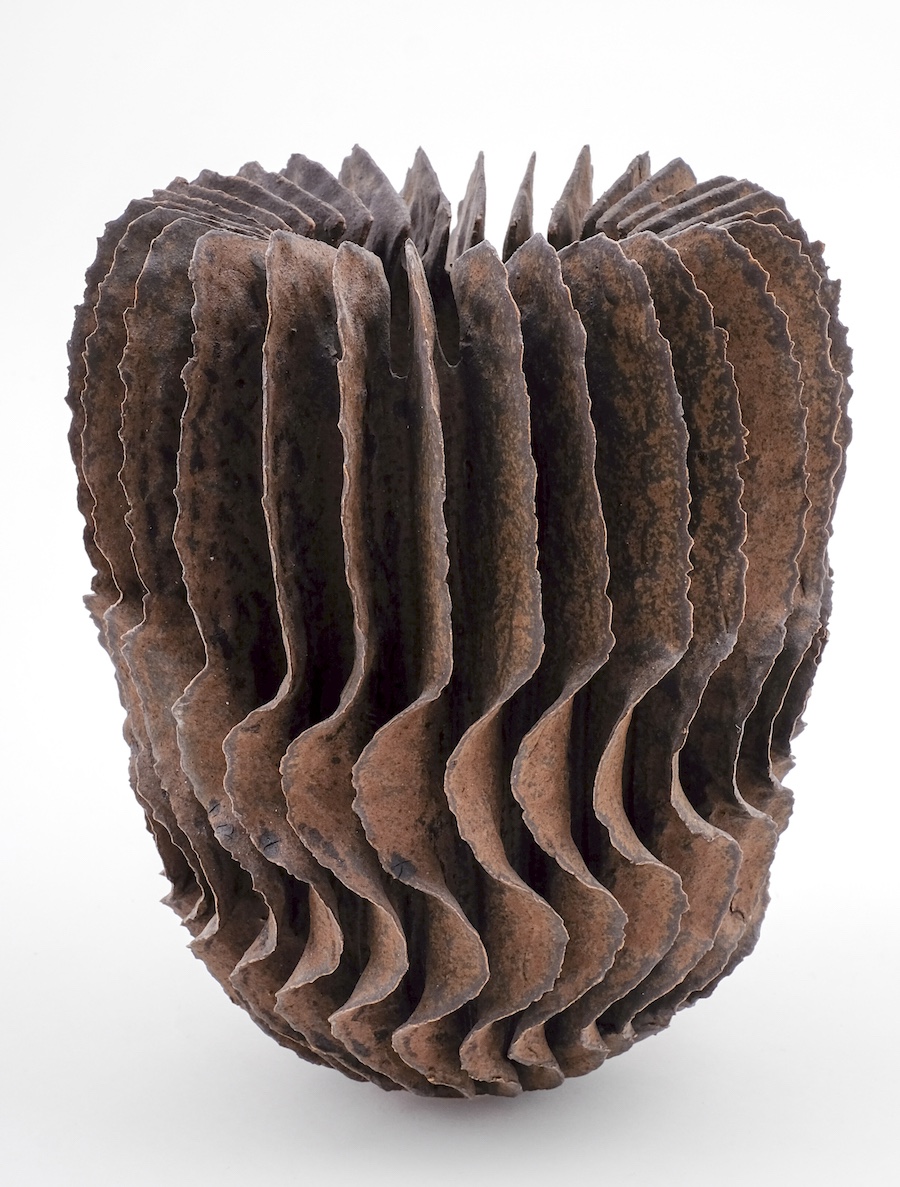
Ursula Morley Price, Fountain Plume Form, Stoneware, 2009
Some works demonstrate the medium’s ability to mimic other materials. Ursula Morley Price’s Fountain Plume Form(2009) is a vase-like object made up of thin vertical vanes that resemble a rusting turbine, while Anne Marie Laureys’ Clay-e-Motion looks like a supple, bundled scarf. You’d be forgiven for mistaking Mary Roehm’s porcelain Tea Bowl #1 at first for translucent glass with a metal rim and base, and Lucie Rie’s small conical piece, its thin walls punctured with ragged holes, could pass for a crudely made metal sieve.

Carol Gouthro, Aurlia gouthroii Barnaclette, Porcelain, 2012
Clay lends itself to some delightfully odd biomorphic creations as well, such as Bonnie Seeman’s untitled stalk of rhubarb-like vegetation, its leaves cut away to reveal ruby red pith; the piece recalls similar vegetable- and fruit-shaped teapots and pitchers from the 18th and 19th centuries. Debbie Weinstein’s Vessel is crowned with purple polyps that could be writhing undersea creatures, and Carol Gouthro’s Aurlia gouthroii Barnaclette depicts a weird fictional organism — scientifically named for the artist — with mouth-like pods sprouting from an orange stem, anchored to a mass of purple seashells. More subtle is Chieko Katsumata’s untitled flower-like form, a fleshy, bright yellow blossom, both vivid and ponderous.
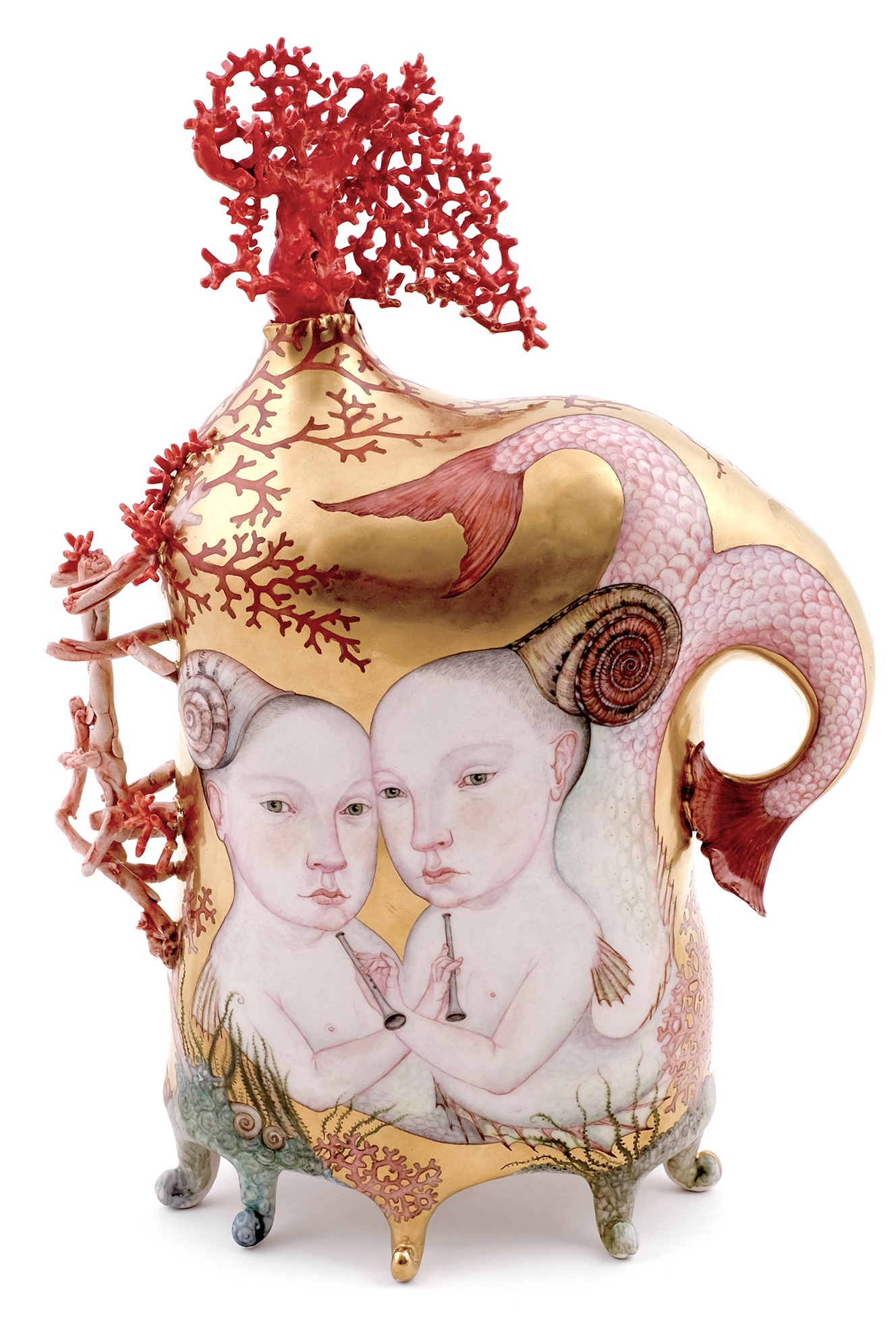
Irina Zaytceva, Twins, Porcelain, 2013

Magda Gluszek, Small Pond, Ceramic, 2013
Ceramics can, of course, be figurative, even narrative. Ruth Duckworth’s Black Angel is an elegantly abstracted figure with blunt “wings” and a slender neck supporting a half-circle head that’s part helmet, part halo, with just a suggestion of a face. It recalls both early modernist works and ancient Cycladic sculpture. Irina Zaytceva’s Twins is a small porcelain vessel decorated with delicate, meticulously rendered images of mermaids and other mythical sea creatures, with a stopper resembling branching red coral. Magda Gluszek contributes Small Pond: a pale female figure in a translucent green swimsuit reclines in a sort of kiddie pool made of transparent plastic and what looks like floral upholstery off a 1970s sofa. She’s blowing a party noisemaker, and her blushing skin, hairless eyebrows, and large pointed animal ears suggest she’s some sort of puckish faerie creature, up to some mischief in the human world.
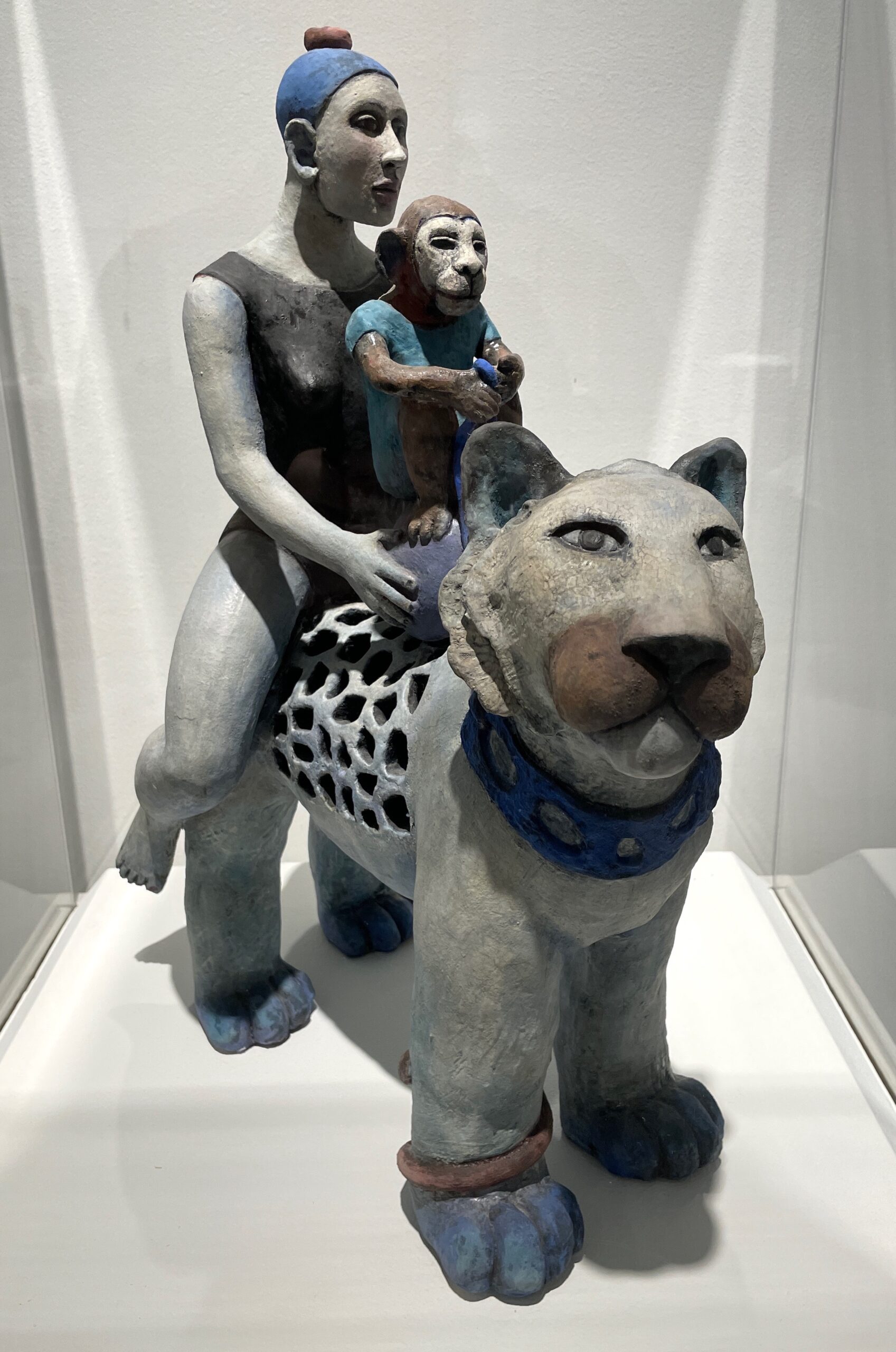
Sara Lisch, Lion’s Journey, Stoneware, 2002
Another fairytale-looking piece, Sara Lisch’s Lion’s Journey, is rich with details that hint at a narrative. A woman dressed as a swimmer, with a monkey seated in front of her, rides astride a lioness wearing a blue collar and a bracelet on one paw. The big cat’s body is perforated to reveal small animals inside its belly. Who these characters are remains mysterious, but the tableau is a beautiful one, painted in blues and browns over a white glaze.

Mariko Paterson, Willow Bago, Porcelain, 2014
Mariko Paterson, who says her works “range from pretty to political,” contributes Willow Bago, a humorous porcelain sculpture with perhaps some serious commentary about imperialism and cultural exchange. It depicts a cartoonishly tall and narrow Winnebago RV, with a cut-n-paste image of Queen Elizabeth, the Queen Mother, smiling from behind the windshield. The white body of the vehicle is decorated with cobalt blue Chinese-inspired images of pagodas, boats, and trees — the “Willow pattern,” as it was known when it became popular in the late 1700s. The RV is made even more precarious by the tourist luggage and Chinese loot piled high on its roof. Britain’s misadventures in China are notorious, so it’s easy to read Willow Bago as a critique, despite the plaque on its roof claiming it commemorates “100 wonderful years” of the Queen Mum.

Viola Frey, A Pile of Figurines and Masked Man
Viola Frey, whose imposing 10-foot tall Arrogant Man stands watch over the FIA’s main ceramics gallery, is represented here by a chaotic bricolage sculpture called simply A Pile of Figurines and a Masked Man that gloms together multiple kitschy ceramic collectibles along with original creations. Among the clutter are what look like a Dutch girl, a bunny, and possibly the Virgin Mary and one of the three wise men, all colored in bright splashes of red, yellow, and blue. Trying to make his way through the jumble is one of Frey’s signature men in suits, either placing a Roman bust on his head or trying to remove it. In Frey’s work, the commercial and fine art traditions of ceramics collide to make an appropriate centerpiece for this wildly varied exhibition.
Making Her Mark on display at the https://flintarts.org through September 28, 2025.

